This “Limited Edition” Blu-ray box set is now available for purchase.
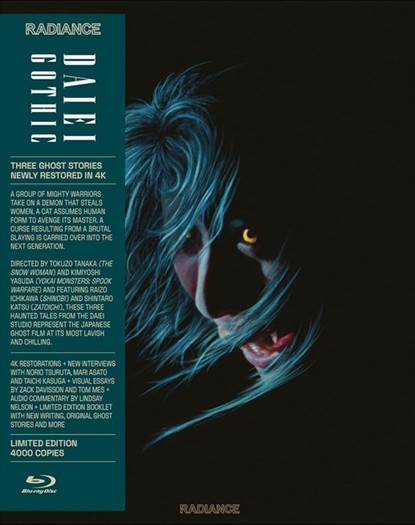
Last year, just in time for Halloween, Radiance Films released Daiei Gothic: Japanese Ghost Stories, a curated collection of three striking period supernatural chillers from Daiei Film . It was an impressive set (The Snow Woman really stood out) that made an impression on international cinema fans. Now, the distributor is delivering Daiei Gothic: Japanese Ghost Stories Vol. 2, which is, well, exactly what you’d expect. It contains three more titles from the studio. Like the previous edition, the movies are varied and interesting, making this another set well worth picking up.
Radiance Films have undertaken 4K restorations of all the films included. So, while filmic and possessing some natural grain, the images are clean and most certainly an upgrade from previous editions (if you’ve even been able to find the titles in this part of the world, which is a remarkably difficult task). And with other Radiance Films’ efforts, there are informative and enlightening extras that will help viewers understand specific cultural references in the folk stories being adapted, as well as specific requests made by co-producers in the later pictures to help sell the features to the public.
I’ll go through the titles on this set chronologically, as the features arrive from very different periods in Daiei history. The first is The Demon of Mount Oe (1960), which came during a successful period at the studio. This lavish, all-star epic that has a bit of everything. Naturally, there’s a threatening demon (he was once a husband whose bride was taken from him) now seeking revenge on all humanity. He threatens an entire kingdom he believes wronged him, forcing everyone to come together and ward off the threat. There are warring regions and samurai who, thanks to some pro-active female characters, put aside their differences and defeat a greater evil. And the demon itself has the capability to transform, meaning it takes many wild and outrageous forms during various battles.
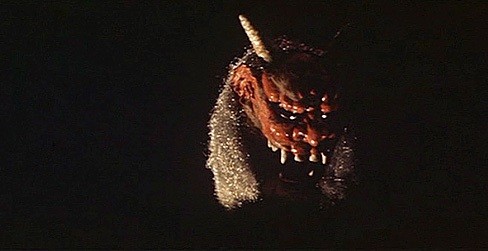
Just about every face in the movie will be familiar to Japanese movie enthusiasts, including Kojira Hongo, Kazuo Hasegawa, Ichikawa Raizo VIII, Shintaro Katsu and many others. Many critics may complain that the pacing suffers as a result, but it’s still fun to watch the melodrama between the stellar cast and big supernatural conflicts.
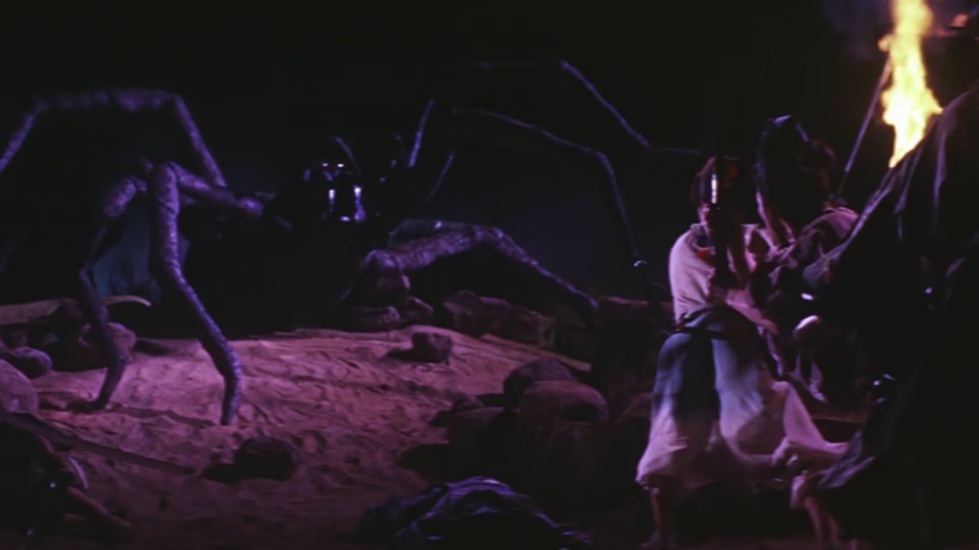
And the large-scale battles and monster fights are impressively shot and rendered. One could argue that at times the movie feels more like a Yokai title than a ghost story, but I certainly didn’t mind. The demon turns into an enormous spider, as well as a horned bull at different points, and the practical creature effects are top-notch for the day. Of course, they don’t always look 100% realistic, but the stylized approach is dynamic and has a visual kick to it. You’re unlikely to forget these beasts after witnessing them go on the rampage.
It’s an entertaining spectacle that is sure to entertain. The bonuses include an interview with period film historian Taichi Kasuga and a visual essay from Tom Mes. They’re both great speakers and relay important information about how this big project came together, and the troubles in dealing with multiple stars in one picture. Naturally, audiences would want to see the famous performers square off and the screenwriters would have to promise big confrontations but also had to be careful not to reward any specific player with a victorious beat down to please the fans of each lead.
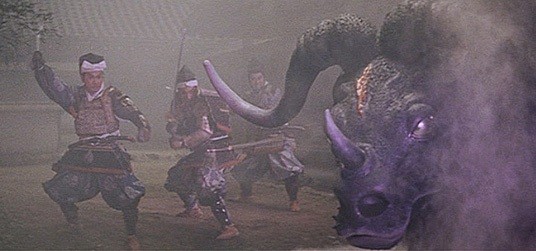
Additionally, the history of “Golden Week” is revealed, which I never knew. While everyone now refers to it as a series of week-long holiday periods in Hong Kong and China, the term did originate from the movie industry. They noted the huge increases in box office revenue during these periods and began embarking on bigger productions to further encourage the public to spend money at the cinema. The “Golden Week” moniker ended up being used to generally describe these breaks.
Watch out for cats! That seems to be a very prominent idea in The Haunted Castle (1969), a later effort from Daiei which features a rather nasty and feline. Specifically, the folk tale involves warlord Lord Nabeshima who demands that a blind monk give up his sister/caregiver Sayo (Mitsuo Kamei) so that she can be his concubine. The monk refuses and is killed, with the murderer gaining control of his estate. Furious sibling Sayo then commits suicide while performing a ceremony. Sayo’s black cat drinks her spilled blood and is possessed by her spirit. The animal then arrives at the property of the warlord and wreaks havoc, murdering those working under him until Nabeshima loses all his power.
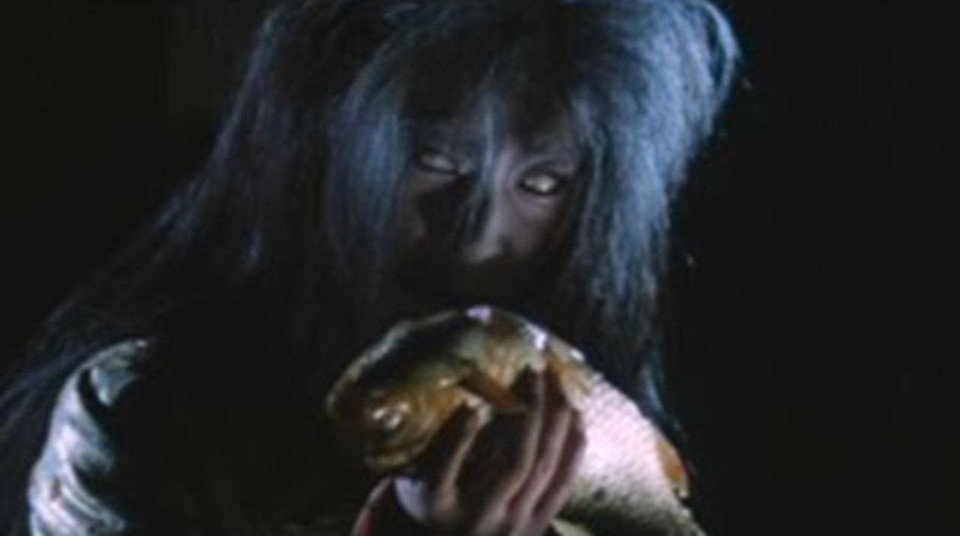
Truth be told, cats (even possessed ones) aren’t exactly intimidating and so the picture isn’t all that frightening. But this is a bloody film in comparison to the previous title, with some creatively grotesque imagery. There are also a few wildly amusing moments, including a scene with the spooky feline flying in the air, as well as an attempt at a cat exorcism late in the story. Despite some of this silliness, it is still an impressively moody picture, with a great deal of the narrative taking place at night with plenty of dark areas within the picturesque cinematography. The darks look quite solid and impressive on the Blu-ray.
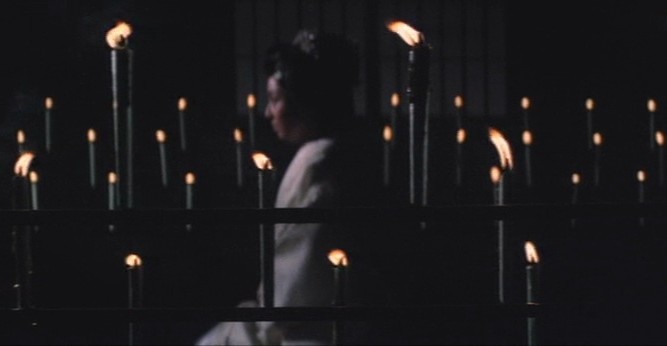
Extras include an informative discussion with Japanese filmmaker Mari Asato. She gives a bit of history about the folk tale the movie is based on and previous versions of the story, as well as analyzing the photography and impressively “painterly” compositions. As it turns out, this effort was directed by Tokuzo Tanaka, who also helmed The Demon of Mount Oe and The Snow Woman, and he seemed to have a skill for telling female-centric horror tales. Tom Mes presents a video biography of co-star Ikuko Mori (who played another of the villain’s concubines). Apparently, this actress had a tumultuous personal life and stabbed her significant other, receiving a jail sentence just before the release of the film. The crime ended up drawing attention and publicity for the picture which helped it at the box office.
Finally, Ghost of Kasane Swamp (1970) came at the end of Daiei’s run (the studio would go bankrupt the following year) and has a noticeably smaller budget, although there are still plenty of fascinating moments on display. The characters are mean, with the central figure being nasty, debt-ridden, womanizing samurai Fukami (Saburo Date). He murders his wife (Mitsuko Tanaka) when she attempts to pay his debt to another man with sexual favors (which was a miscommunication on Fukami’s part). He treats her and everyone around him like dirt. The scarred wife and the man she had been sleeping with return from the dead to take vengeance as scarred, nasty spirits.
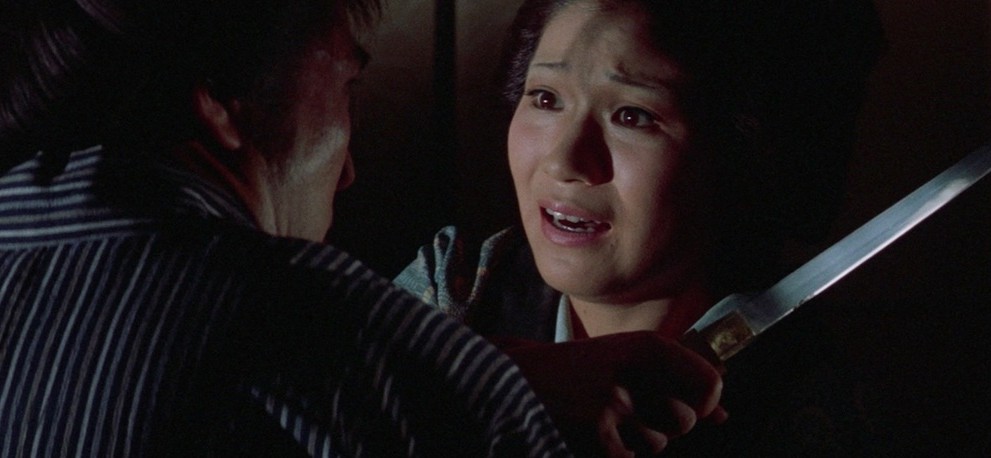
The cruelty on display is what really distinguishes this effort. As mentioned, Fukami is terrible towards others, and the entire town isn’t much better morally or ethically. They’re all either trying to cheat each other for money or power, and several are obsessed with their looks and appearance. The story dishes out just desserts for many characters in appropriate ways. Despite the budget, the swamp set is very moody and filled with an atmosphere of dread.
The bonuses here include an interview with the grandson of one of the Daiei studio heads. He describes how serious the money problems were with the studio, so much so that this effort was co-financed by Nikkatsu. The following year, Nikkatsu would start a “Pink” film line with their titles focusing on erotic subject matter. It was at their behest that more sex scenes be added to the story. So, that is why (while not extremely explicit) there are a few lengthy detours in which the characters participate in sex scenes.
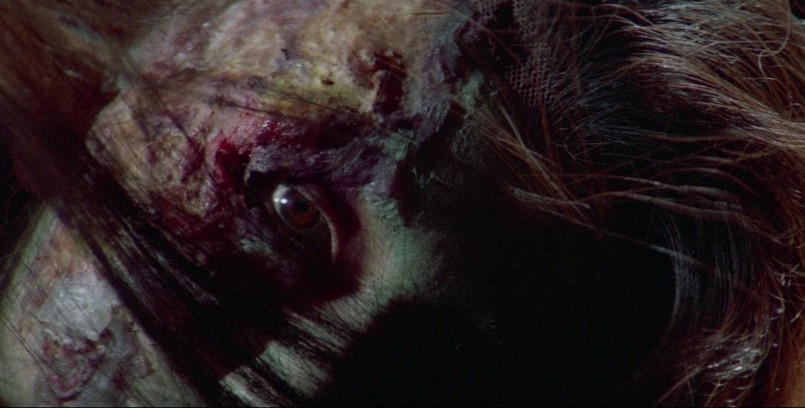
He does mention that the story is scaled back and that there are few extras, but that the tight budget also resulted in interesting new filmmaking techniques. In particular, he notes the interesting use of a shaky camera, as well as being inspired by other 60s films to tell its story with less-than-heroic characters. There is also a scene-selection film historian commentary that notes these elements. And the disc includes a bonus detailing the original folk tale and the more than seven versions of it that have been adapted. Again, the extras here add important background info that help viewers understand the themes. The image quality is slightly grainier on this title than the others, but it’s likely due to the low budget and the quality of the source material
In all, this is another great set containing a trio of notable films. They are all distinct in their own ways and deliver plenty of stylish and exciting sequences. As always, Radiance Films has improved the image quality so that, even if there is a bit of grain on some of the pictures here and there, they look better than ever. And the bonuses really add a lot to add a sense of understanding and enjoyment to the proceedings. Daiei Gothic: Japanese Ghost Stories Vol. 2 is a Blu-ray set worth buying.


